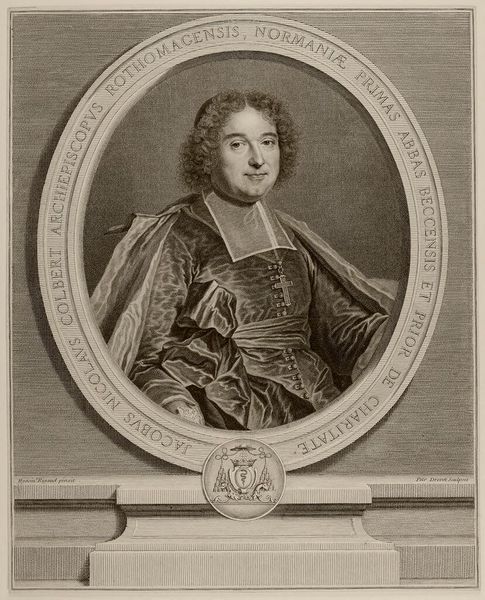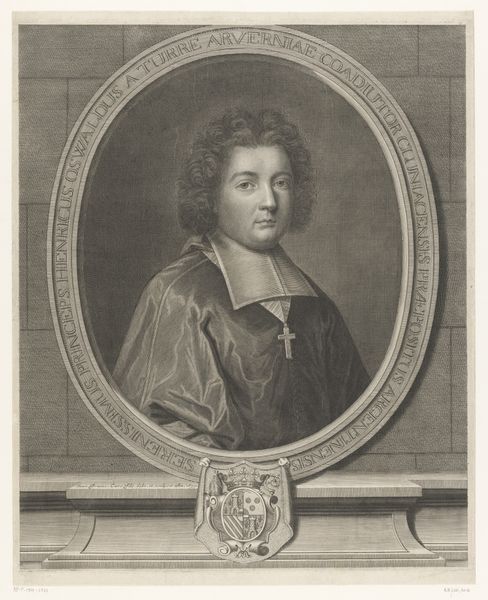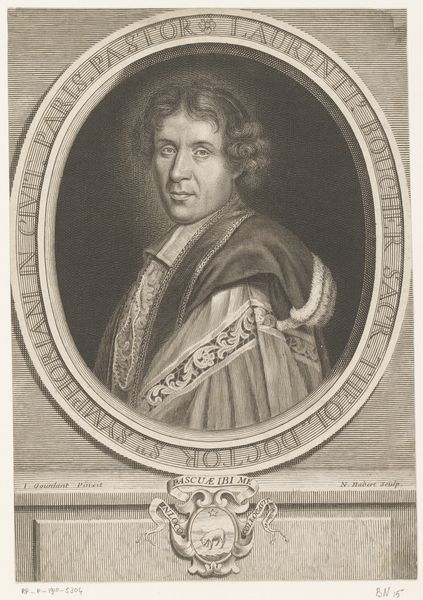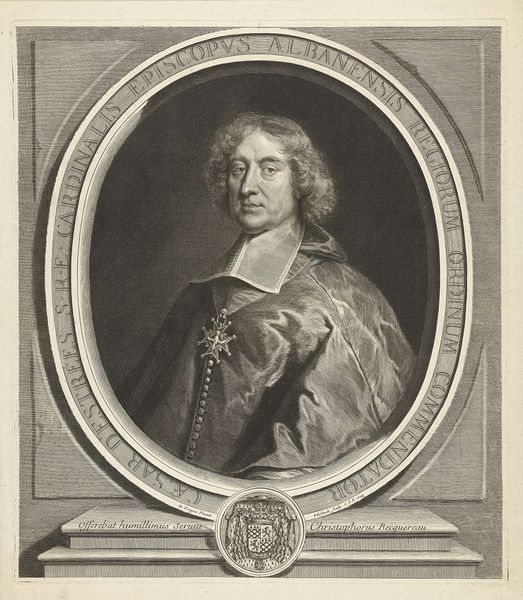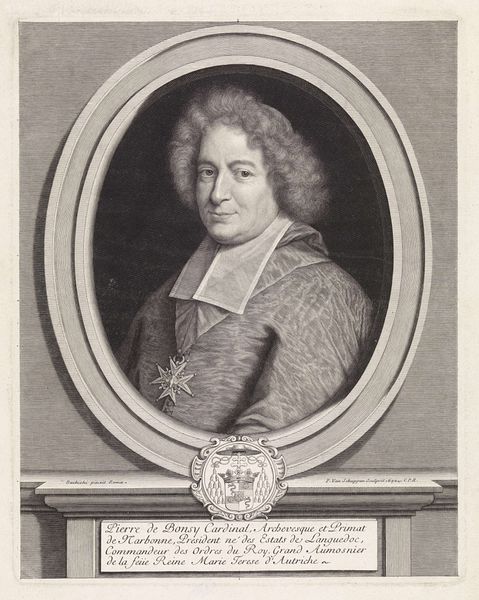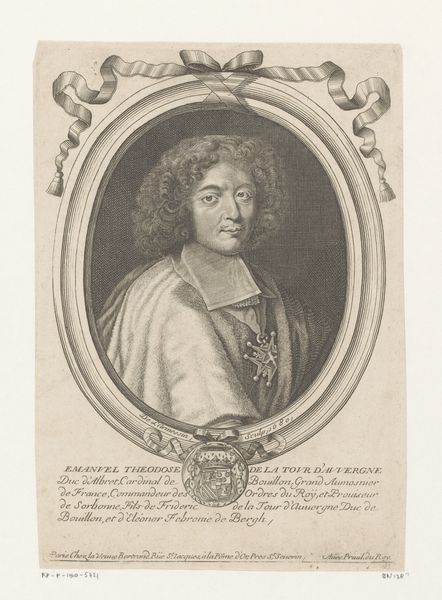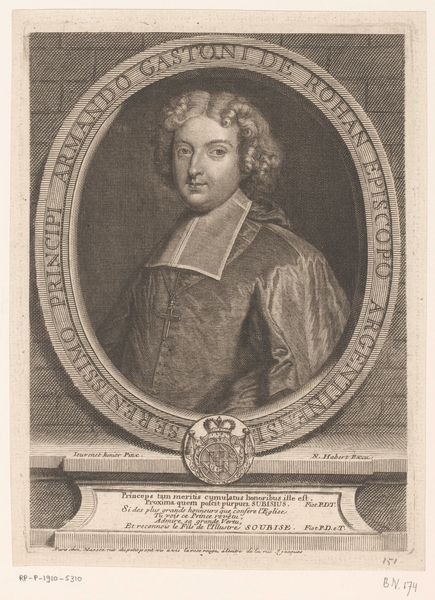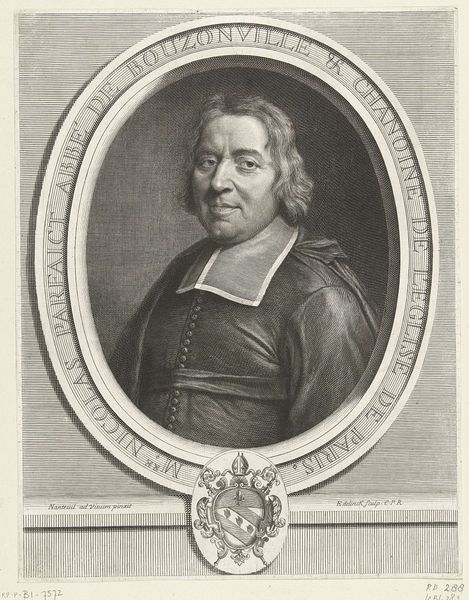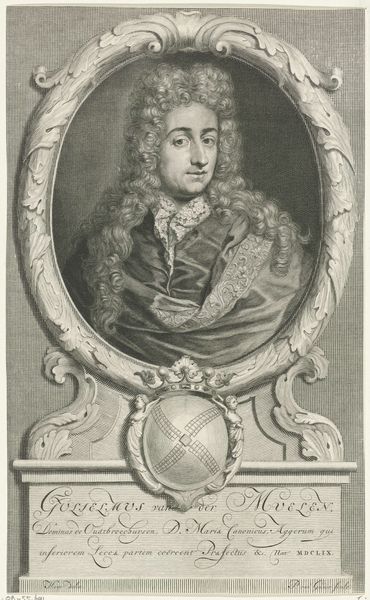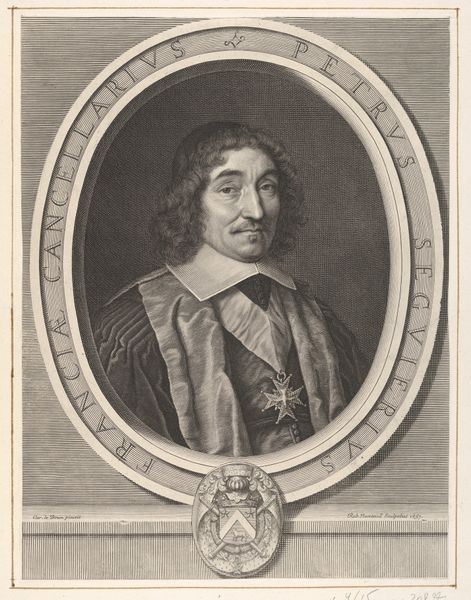
Portrait of Jacques Nicolas Colbert, Archbishop of Rouen after 1699
0:00
0:00
drawing, print, paper, engraving
#
portrait
#
drawing
#
baroque
# print
#
sculpture
#
charcoal drawing
#
paper
#
line
#
academic-art
#
engraving
Dimensions: 452 × 362 mm (image/sheet, cut within platemark)
Copyright: Public Domain
Curator: This is Pierre Drevet's "Portrait of Jacques Nicolas Colbert, Archbishop of Rouen," created after 1699. What are your immediate thoughts? Editor: I find the portrait intriguing, especially given Colbert's prominent role within the Church. There's a certain softness in his expression that feels almost at odds with the rigid structure of the clergy. Curator: That softness comes through in the engraving technique, I think. The line work is incredibly delicate. We must consider the materials at hand, too—the copper plate, the paper, the ink—and the skilled labor required to transfer the original painted portrait into a reproducible print. Editor: Absolutely, the medium shifts our perspective. Engravings allowed for broader distribution, making Colbert's image accessible, potentially shaping public perception and solidifying his power in ways the original painting may not have. How does this manufactured accessibility affect our understanding of elite religious figures? Curator: Good point. The print becomes a commodity, furthering the distribution of power through material means. Did this mass reproduction demystify the clergy or, conversely, reify it by extending his reach and perceived presence through circulation? Editor: It’s a complex negotiation. Colbert is framed literally in that oval. The inscription, the decorative elements, speak volumes about constructing identity and authority during this period. This work visualizes an intersection of politics, faith, and societal norms, right? Curator: Precisely. I think about Drevet's role too; a skilled craftsman navigating the demands of representing such a figure. We must examine how his craft shaped the message embedded in the portrait. Editor: Considering all these points provides critical social and political contexts necessary to analyze the intersectional identities presented within it. Curator: A great discussion. Looking closely at its material conditions allowed us to dig deeper into social structures. Editor: Indeed. Analyzing portraiture in its broader context illuminates power structures of that era.
Comments
No comments
Be the first to comment and join the conversation on the ultimate creative platform.
